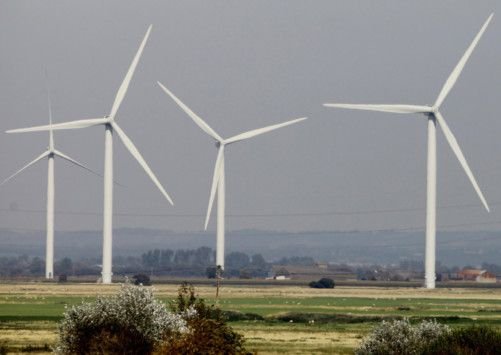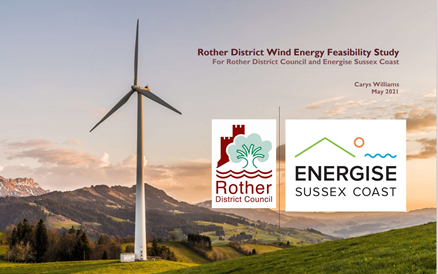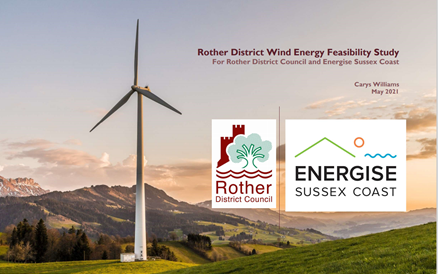With the IPCC report confirming the overwhelming urgency to tackle climate change and accelerate the installation of renewable energy it is very timely that a talented GIS mapping graduate at Brighton University ( Carys Williams) has produced a Wind Feasibilty study of Rother District. Rother District Council website link
According to Nichola Watters, Planning Policy Manager, Rother District Council “This Study provides a clear steppingstone to enable Rother District Council to investigate renewable energy potential, specifically wind turbines, within the district. It enables the Planning Policy Team to, through further future work consider commercial attractiveness and viability, to consider how best to develop future planning policy for such technologies within the district.”
Dr Kristina Sodomkova, Environment and Policy Manager, Rother District Council, set up the MSc placement scheme that produced this study with other students completing reports on cycle parking infrastructure and bio-bead pollution in Rother. She explains “This report is a testament to the value of a local authority engaging with a higher education institution. Involving students as part of their MSc placements generates new knowledge and insights a local authority would otherwise be unlikely to produce.Students are our future and any support we can lend them on their professional journey in these testing times is worthwhile.”

Ian Smith, Adviser to Energise Sussex Coast, adds “This is a shining example of how collaboration between community energy, a local authority and higher education can be truly fruitful.”
This was a brilliant piece of work by Carys and a report like this is the perfect starting point for a local community energy group although it may be a 2-3 year process to install community owned and managed onshore wind turbines. The citizen’s energy movement in the EU projects that up to 260 million Europeans could be involved in community energy by 2050 and generating 45% of all of Europe’s energy and onshore wind remains the cheapest way to generate energy. This vision can only be achieved by starting locally with community led projects inspired and informed by research such as this, which in our case has already led to an application for Rural Community Energy funding to undertake more detailed feasibility studies.

“ Wind turbines can be divisive and polarising” says Richard Watson of Energise Sussex Coast “ so the first step is to consult with the local community and reassure them that the benefits will be distributed locally and residents will be part of the project as members and co-owners of the turbines. They have to see more affordable energy prices and home improvements as a direct result of any scheme. For us this is a way to democratise and decentralise energy generation and use it to directly tackle energy poverty in local communities”
